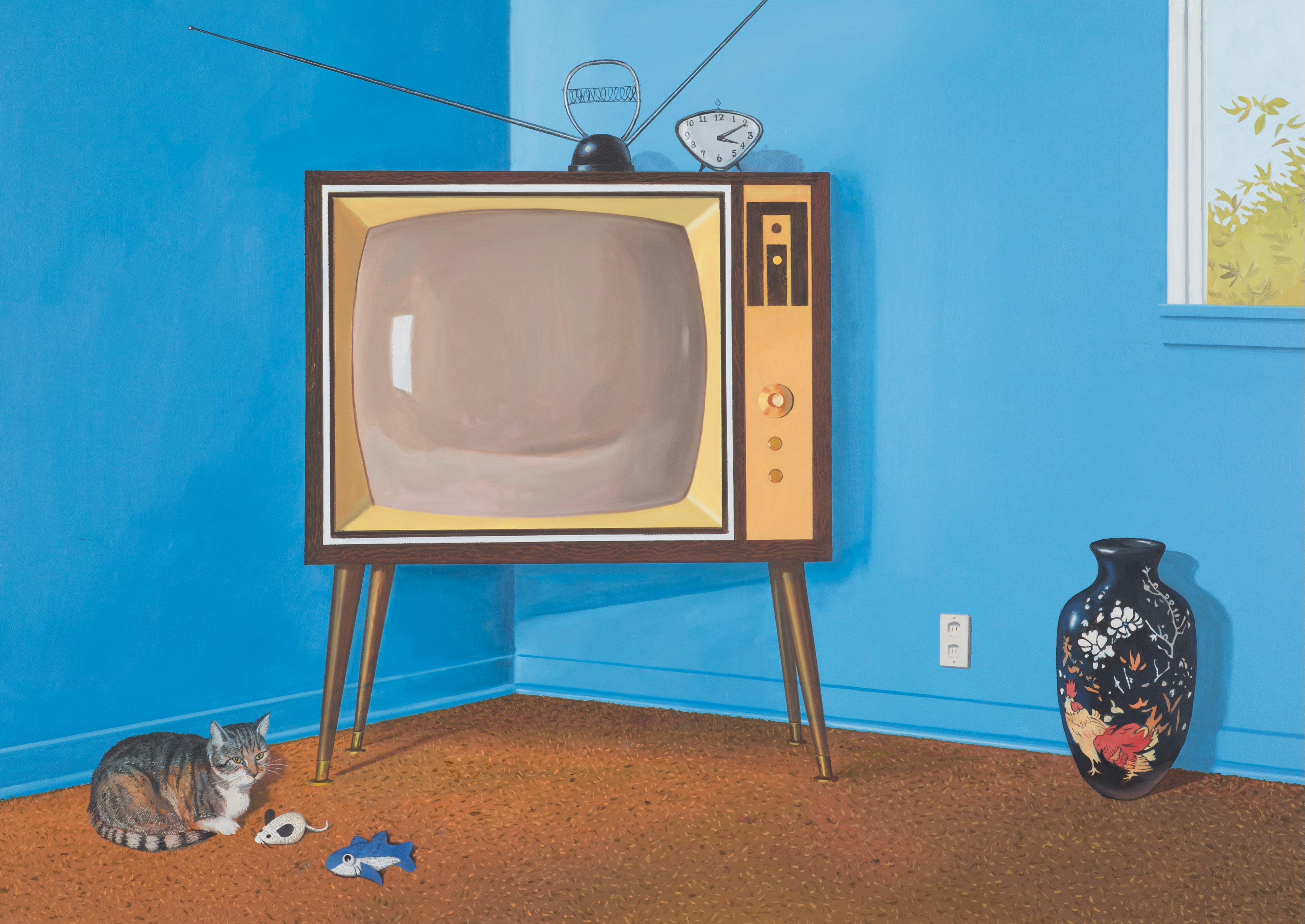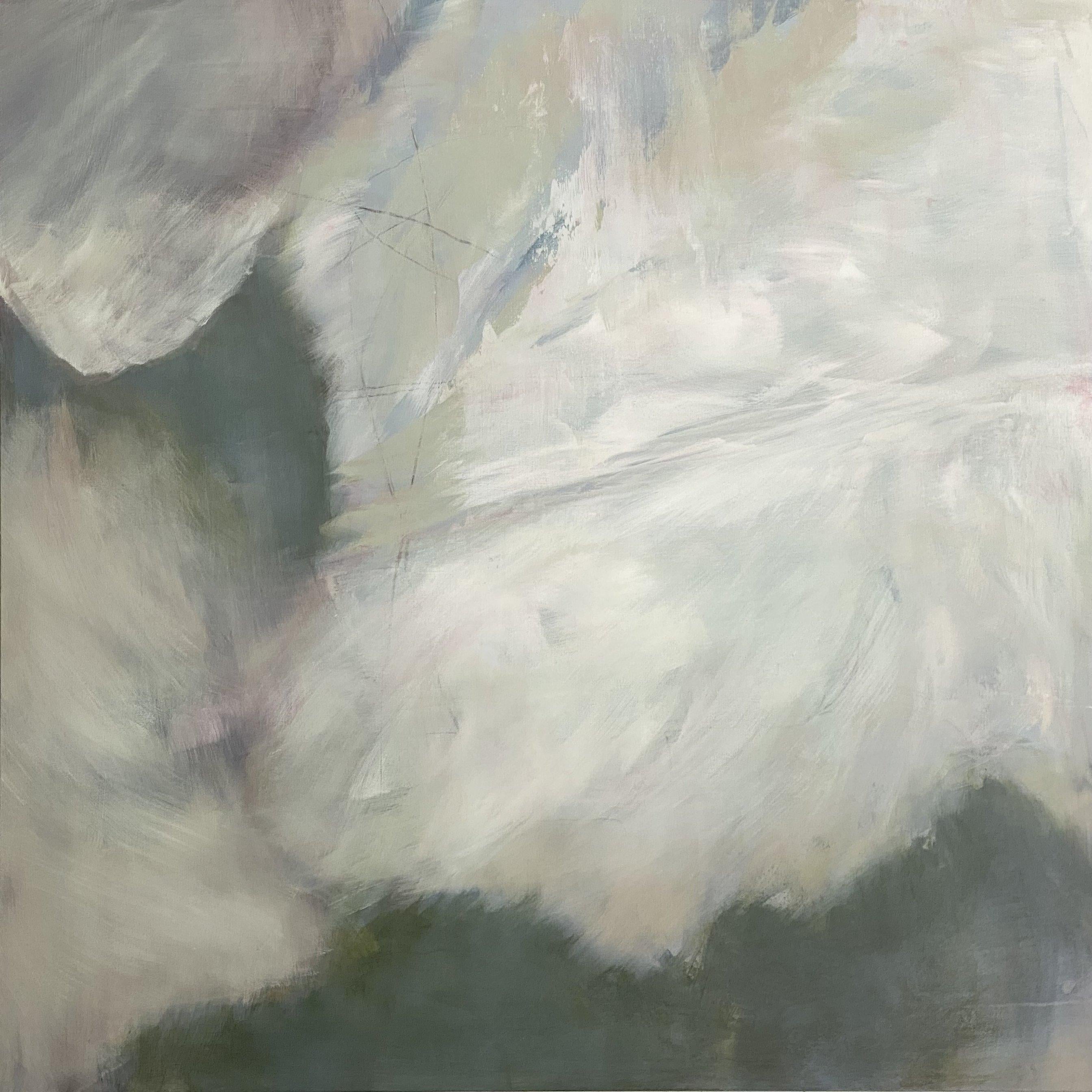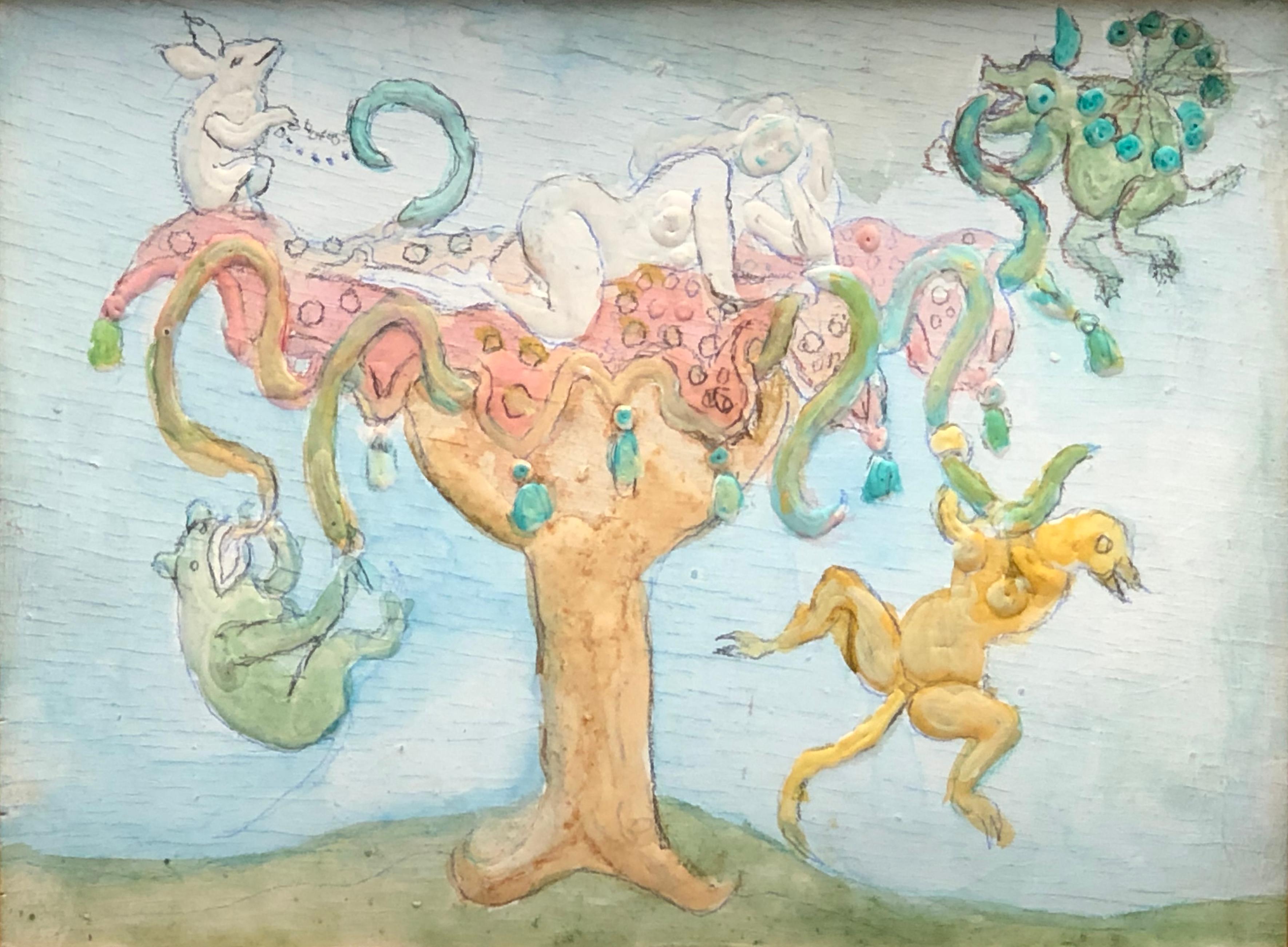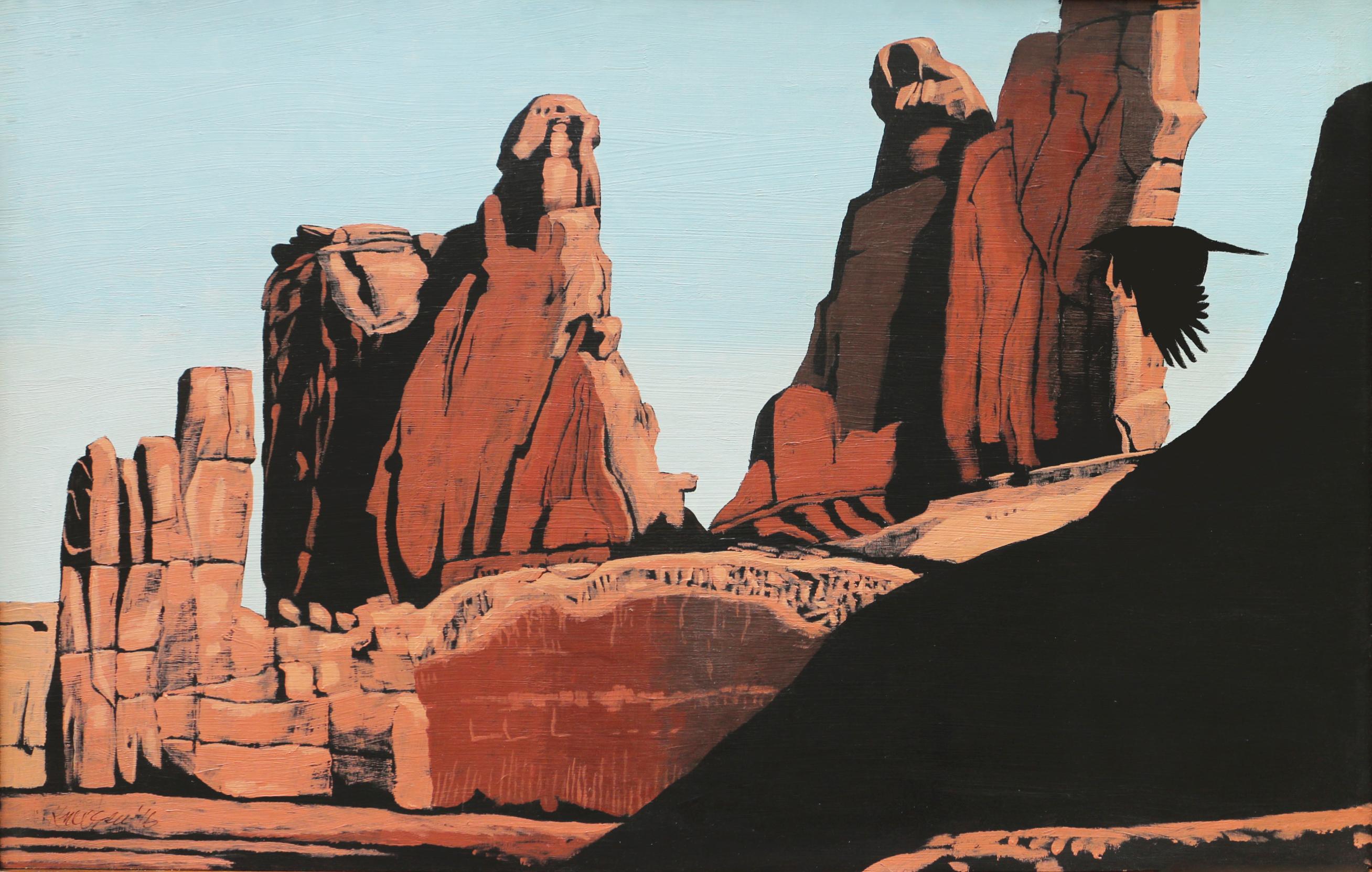Items Similar to El cuadragésimo cuarto encuentro
Want more images or videos?
Request additional images or videos from the seller
1 of 4
José Antonio DávilaEl cuadragésimo cuarto encuentro1997
1997
About the Item
El cuadragésimo cuarto encuentro, 1997
Acrylic on canvas
112 x 132 x cm
44 x 51.9 x 0 in.
About the Artist
Born in New York on January 13, 1935. In 1941 he moved with his family to Caracas. Here he studied at the School of Plastic Arts and Applied Arts of Caracas, since 1948. In 1950, leaving school, he entered the Free Workshop of Art and began as a realistic painter of social, folk and urban themes. Between 1954 and 1956, living in Barquisimeto, he studied at the Martín Tovar and Tovar Arts School with the teacher José Requena, also like him, at that time, painter of social realism. In 1958 he participated in the activities of the Taller de Arte Realista in Caracas. This 1958 begins a long tour of the socialist countries, and visits France, Italy and Spain. In 1966 he was appointed director of the Experimental Art Center of the University of Los Andes, in Mérida, time that takes advantage to make a turn in his pictorial work, now moving to a more synthetic and landscape style, followed by a period when he was influenced by pop art. In 1967 he toured several museums in the United States and in 1971 he returned for a time to New York. He exhibited individually at the Venezuelan Soviet Institute, 1959; Exhibition Hall of the Mendoza Foundation, 1961; Museo de Arte Moderno, Mérida, Mérida state, 1970; Galería Estudio Actual, 1973; Arras Gallery New York, 1974; Galeria Arte Contacto, 1976; Galería Bonino, New York, 1978; Freites Gallery, 1986. Among other rewards he has received: Premio Roma, in the XVIII Salón Oficial de Arte Venezolano, MBA, 1957; Premio Armando Reverón, in the IV Salón Julio T. Arze, Barquisimeto, Lara state; Premio Henrique Otero Vizcarrondo, in the XX Salón Oficial de Arte Venezolano, MBA, 1959.
- Creator:José Antonio Dávila (1935, Venezuelan)
- Creation Year:1997
- Dimensions:Height: 44 in (111.76 cm)Width: 51.9 in (131.83 cm)
- Medium:
- Movement & Style:Constructivist
- Period:
- Condition:
- Gallery Location:Miami, FL
- Reference Number:1stDibs: LU1613212746522
About the Seller
5.0
Vetted Seller
These experienced sellers undergo a comprehensive evaluation by our team of in-house experts.
Established in 1989
1stDibs seller since 2021
Typical response time: 1 to 2 days
- ShippingRetrieving quote...Ships From: Miami, FL
- Return PolicyA return for this item may be initiated within 14 days of delivery.
More From This SellerView All
- Alirio Palacios, Caballo Guerrero, Mixed media on cardboard, 2012By Alirio PalaciosLocated in Miami, FLAlirio Palacios was one of the most versatile Venezuelan painters, draftsmen and engravers of the second half of the 20th century. He was part of the n...Category
2010s Animal Paintings
MaterialsMixed Media, Cardboard
- Ofrenda CVIII 108Located in Miami, FLOfrenda CVIII 108, 2013 Unique Piece Acrilico sobre tela 70 x 70 x cm 27.5 x 27.5 in. About the Artist Born in New York on January 13, 1935. In 1941 he moved with his family to Car...Category
2010s Constructivist Figurative Paintings
MaterialsAcrylic
- Escena de recolección de frutasLocated in Miami, FLEscena de recolección de frutas BRY-002, 1937 Edition 1/8 Bronze 200 x 113 x 11.5 cm 78.7 x 44.4 x 4.5 in. ABOUT THE ARTIST Narváez was born in Porlamar, Venezuela, in 1905; he was the fifth son of eleven siblings; his parents were Jose Lorenzo Narváez and Vicenta Rivera. Don José Lorenzo, a multifaceted and creative man, sowed the seed of creativity in his son. “My father did not fit in with his fantasies of cabinetmaker, bricklayer, master builder, and self-taught architect.”1 From an early age, Francis was led to the artistic activity, he traced, carved, made replicas of the furniture and the saints restored by his father. In 1920 he obtained his first professional assignment, a San Rafael for the Church of Carupano, and, in 1922, his father authorized him to travel to Caracas to pursue his studies as an artist. He studied at the atelier of Marcos Castillo, at of the Angel Cabre y Magriña and at the Academy of Fine Arts in Caracas, where he was introduced to the painters and intellectuals of the time. In 1928 he presented his first solo exhibition at the Club Venezuela. With the money raised from the sale of the works and the support of Monsignor Sosa, and the Ministers Centeno Grau and Arcaya, he studied in Paris on a scholarship. Once there, he enrolled at the Académie Julian, where Tito Salas, Cristóbal Rojas and Arturo Michelena had also studied. It was in Paris where, unable to work in wood, he turned to stone carving. “In Paris, I didn’t have wood, so I carved a lot in stone (…), when there were demolitions I purchased chunks of stone, I would take them to the workshop and carve them.”2 His first attempts at volumetric sculptures and painting in plain colours, linked to the thematic of American miscegenation and Creole reality, can be traced back to that first trip to Paris. During his stay in the French city, Arturo Uslar Pietri, Alfredo Boulton, and Finita Vallenilla supported the artist both financially and logistically, and in February of 1930, the trio of friends arranged another exhibition for him at the Club Venezuela. Narváez describes his exhibition as follows: “(…) in it I feel that the sculptural work is more my own, done with more assurance, a response to my pursuit of large planes, stylisation and synthesis.”3 By then, as Boulton himself noted in his book about the artist, Narvaez departed from most of the artistic traditions that prevailed by that time in Venezuela. In 1931 he returned to Caracas and established his atelier at the Barrio Obrero in Catia. The atelier became the hub of the intellectual life of the time. “In those years, the atelier of Francisco Narváez was the hub of the greatest Venezuelan hope. Nothing comparable to it can be found either before or since.”4 From that year onwards, exhibitions, projects, trips, and awards we multiplied. He was awarded the President of the Republic of Venezuela Prize, the National Sculpture Prize of the 1st Official Venezuelan Art Salon, and the John Boulton Prize of the 3rd Annual Venezuelan Art Salon; for the Military Academy, he produced a spectacular relief entitled La Patria. In 1945, commissioned by the architect Carlos Raúl Villanueva, he produced two groups of sculptures known as Las Toninas, both located in the O’Leary Square. There, as he himself states, he incorporates some baroque patterns into the figures to the source itself: “It is a work of balance between the decorative requirements and the sculpture of planes and angles.”5 In 1948 he was awarded the National Painting Prize. In the same year, he was called upon by the architect Carlos Raul Villanueva to participate in the project for the arts integration in the Universidad Central de Venezuela. Francisco Narváez’s public output continued with works such as the statue of Fermín Toro, La Educación, La Ciencia, three murals (produced by María Luisa Tovar) for the Instituto de Medicina Experimental, El Cristo; el Atleta, the equestrian statue of General Rafael Urdaneta. In 1953 he was appointed Director of the School of Plastic and Applied Arts, and in July of the same year, he exhibited “Francisco Narváez, Maderas, Piedras y Bronces” (Francisco Narváez, Woods, Stones and Bronzes) at the Museum of Fine Arts. Narváez is, unquestionably, one of the great Venezuelan sculptors, his work goes through various stages and interests; as the art world evolves, the artist does not remain in his initial scopes of work. His creations are not imposed by the prevailing trends or fashion but do evolve by experimenting with new materials and interests. When one peruses the artist’s lengthy list of exhibitions, commissions, and awards, it is worth remembering the Narvaez who embark on his career as a child and who, overcoming obstacles, knew how to make the most of his curiosity. He did not settle for living off his successes. He did not remain stagnant as many creators of his environment did. Narvaez managed to understand the changes in the history of art around him. We must not overlook the fact that Francisco Narvaez is an artist amid all the changes occurring in the art world. He moves from the classics to the great transformations in the art world. It is the Europe of Picasso, Braque, Arp. He observes, he is aware of what is happening in the centres of the world of art, but between his craft and his sensitivity, the result is NARVAEZ, his stamp, and his identity. Francisco Narváez comes from tradition, and his first stage is linked to the classics, to the exploration of his heritage, but always with his very own language. Throughout his prolific career, he knew how to remain true to himself, without disregarding the influences of his surroundings or his artistic interests: his ability as a sculptor, his selection of materials, whether they were wood, stone or bronze; his choice of the subject of his work…His mastery and great craftsmanship are a constant that over time have made him a leading player in the history of contemporary Venezuelan and world art. From his beginnings, no subject was foreign to him. His paintings, drawings, aquarelles, and sketches are testimony to his prolific output. Among his themes are portraits, our traditions, still lifes, and landscapes. Narváez is an artist who represents his time. Later, he evolved towards purer and simpler forms, abandoning figurative art for short periods. In 1956 he declared to the newspaper El Nacional: “Every day I am freeing myself, it is a soul that frees itself from the ephemeral wrappings of the circumstantial always, as well as from the inevitable weight of the anecdote. This second stage of my work is remarkably close to abstractionism, even if there are still certain figures or figurations in the sculptures that I will shortly be showing. However, pure, and absolute abstractionism, it will treat the form itself as the sole reason for its existence on the plane of artistic excellence.”6 The artistic development was his professional life. Each period of his life as an artist, he went one step further, searching, solving, seeing plenty of things and understanding how diverse expressions were transforming themselves. His hands followed his gaze and his mind, always inquisitive. He added movement to the volumes. Arturo Uslar Pietri, “Formas Nuevas”, Cromotip editions, 1956 “Francisco Narváez is a path: the path that Venezuelan sculpture...Category
1930s Constructivist Figurative Sculptures
MaterialsBronze
- Tu y YoBy Jorge SalasLocated in Miami, FLVMA-012, 2015 Edition / Talla directa sobre marmol blanco de Carrara 36 x 16 x 10,5 cm 14.1 x 6.2 x 41.3 in. The "Tu y Yo" (You and Me) series is based on complementary opposites and contain revealing elements of male and female symbology. As a tribute to his teacher Jesús Soto he introduces direct references to the work of the kinetics in hatched backgrounds of lines to produce the optical vibrations characteristic of that movement. JORGE SALAS...Category
2010s Constructivist Abstract Sculptures
MaterialsMarble
- Carmelo Niño Celebrando a Kiefer I, 2021, 200 x 126 cm, 78.7 x 49.6 in.By Carmelo NiñoLocated in Miami, FLCarmelo Niño Celebrando a Kiefer I, 2021 Acrylic on canvas 200 x 126 cm 78.7 x 49.6 in. The work is accompanied by a certificate of authenticity signed by the artist. Carmelo Niño, a Venezuelan artist originally from Maracaibo, Zulia State, an oil-producing region of Venezuela, is today one of the most outstanding painters in the plastic arts landscape in the country. Many years have passed since his birth in 1951 to the present, when he inaugurates this August 2022, a major exhibition at the Ascaso Gallery in Miami, with paintings from different dates resulting from the permanent and daily work of reflection, physical and intellectual, that he has always pursued in his creative life. Without neglecting a single moment of day-to-day life to be in front of the medium-sized canvas on the easel or of larger canvas hanging on a wall, he works in his large studio in the area of El Junco, outside the capital city of Caracas, surrounded by lush green vegetation, with a wonderful climate of pleasant temperature and poetic mist that invites to the reverie and glorification of his life as a painter. From a very early age Niño and his family discovered his vocation for drawing, a discipline in which he showed a special disposition and talent. From this moment on he dedicates his life to art, to the practice of painting, starting from a fantastic and strange world of fantasy, close to surrealism, unfailingly influenced by the circus of fantasy owned by his mother and a musician father. These circumstances will shape the artist's life. His traces and influences from the beginning will be present in his creative work, especially through the memories of the infinite curiosity to look, touch and be enraptured by the strange furniture and objects from his mother's circus that he knew were deposited in a room of the house. This universe of fantasy will leave an indelible mark on his subconscious and will serve as the thematic and artistic support for all his work. In an interview conducted by the critic Roberto Montero Castro in 1977, Carmelo Niño states, "the symbols of my painting come from the everyday life". His life has been one of continuous work and effort. At the age of fifteen he enrolled in the School of Arts of Maracaibo, graduated three years later, 1966, and immediately, with a scholarship, he travelled to Spain, took a few courses at the San Fernando Academy in Madrid, strengthened his preparation in art workshops and in frequent visits to the big museums of this European capital. With a sensitive gaze he penetrates the mysteries of masterpieces of the great artists who have made the universal history of art. His life as a painter has been intense, of intense study, preparation and work. With much composure and modesty he talks about his life and his artistic production, recognized not only in Venezuela, but also internationally. His participation in exhibitions began in 1969 and as early as 1970 he held his first individual exhibition at the Fine Arts Center of Maracaibo. From these dates onwards successes started to come, with the participation in collective and individual exhibitions, in Venezuela and abroad, as well as the awards from 1971, when he won the Scholarship Award at the First National Salon of Young Artists in Maracay, Aragua State; in 1972 he was awarded the Second Prize at the Regional Salon of Maracaibo. 1975 is the year of awards, he received the First Prize at the IV Salon of Young Artists in Caracas; the Aurelio Rodriguez Award at the IV Avellan Salon in Caracas and the First Prize at the Salon of Young Zulian Artists in Maracaibo; he also participated in the group exhibition of History of Painting in Venezuela, at Casa de Las Americas, Havana, Cuba; and in 1976 he was invited by Jose Gomez Sicre to take part in the exhibition of Venezuelan painting...Category
2010s Surrealist Figurative Paintings
MaterialsCanvas, Acrylic
- Carmelo Niño, El Rapto, Acrylic on Canvas, 2019By Carmelo NiñoLocated in Miami, FL"El rapto" is a painting by Venezuelan artist Carmelo Niño (b. 1951). Since he first appeared in the local scene, with his early individual exhibitions at...Category
2010s Contemporary Landscape Paintings
MaterialsCanvas, Acrylic
You May Also Like
- Contemporary, American, Blue, Vintage TV, with Cat in Mid Century Mod RoomLocated in Fort Worth, TX"Contemporary, American, Blue, Vintage TV, with Cat in Mid Century Mod Room" This work is titled, "Ten past 4:00." It is 41 x 58.25" and is Unframed Oil on Canvas. $18,000, price negotiable. A well-known figure of the contemporary Fort Worth art scene, Daniel Blagg...Category
2010s American Realist Interior Paintings
MaterialsCanvas, Oil, Acrylic
- Sweet affection, 2021, Contemporary impressionism, neutral, white, pink, nurseryBy Juanita BellavanceLocated in Cumming, GAThis painting reminds me of the sweet affection between adult and child represented as from the animal as l works. It makes me think of a sweet nursery image.Category
2010s Abstract Impressionist Abstract Paintings
MaterialsAcrylic
- Traveling MagiciansLocated in Washington, DCOne of a kind painting by Noche Crist (1909- 2004). Noche Crist was an American artist born in Romania. Acrylic painting is on plaster on wood which gives the painting a wonderful te...Category
1990s Outsider Art Animal Paintings
MaterialsPlaster, Wood, Acrylic
- The Fountain of YouthLocated in Washington, DCOne of a kind painting by Noche Crist (1909-2004). Noche Crist was an American artist born in Romania. Acrylic painting is made with plaster on wood, which gives the painting a wonderful texture and depth. Painting is signed and titled on reverse "The Fountain of Youth...Category
1990s Outsider Art Nude Paintings
MaterialsPlaster, Wood, Acrylic
- San Rafael Reef #2By Mark KnudsenLocated in Salt Lake City, UTSan Rafael Reef #2, acrylic on panel, 11 x 37 1/2 inches, $2,200 “It is my feeling that the desert country of the American West is too large, too wild, too gorgeous to be encompassed by traditional landscape painting. Our inherited aesthetic defines beauty in landscape as green and arable land or grand, breathtaking places. I feel the need to expand that definition. I want to portray the desert as it is right now; to dispense with the limitations of what has come before, to quietly point out the beauty of places that are harsh and forbidding to habitation but express an aesthetic of the wild. I strive to go beyond the sentimentality that often defines our images of the West. The scale of many of my pieces (an extreme horizontal) is a compositional strategy to capture the vastness of these places.” – M. Knudsen Mark Knudsen...Category
2010s Other Art Style Landscape Paintings
MaterialsPanel, Acrylic
- Park Ave With RavenBy Mark KnudsenLocated in Salt Lake City, UTPark Ave With Raven, acrylic on panel, 15 x 24 inches (Framed Size: 24.25 x 15.5 inches), $1500 Scene from Arches National Park, black raven in foreground. “It is my feeling that the desert country of the American West is too large, too wild, too gorgeous to be encompassed by traditional landscape painting. Our inherited aesthetic defines beauty in landscape as green and arable land or grand, breathtaking places. I feel the need to expand that definition. I want to portray the desert as it is right now; to dispense with the limitations of what has come before, to quietly point out the beauty of places that are harsh and forbidding to habitation but express an aesthetic of the wild. I strive to go beyond the sentimentality that often defines our images of the West. The scale of many of my pieces (an extreme horizontal) is a compositional strategy to capture the vastness of these places.” – M. Knudsen Mark Knudsen...Category
2010s Other Art Style Landscape Paintings
MaterialsPanel, Acrylic
Recently Viewed
View AllMore Ways To Browse
Wr Leigh
Used Mcmillan A4 Stock
China Horse Painting
Horse Hunting Oil Painting
Art With Maine Connection
Historic Wallpaper
Bronze Abraham Lincoln
Hound Dog Painting
Infinity Charm
Gordon Barnett
Golden Moon Slonem
Painting With Butterflies
Butterfly Painting Hunt
Kids Original Signed Painting
New York Neo Expressionism
African Jungle
European Equestrian Paintings
Hunt Slonem Acrylic





